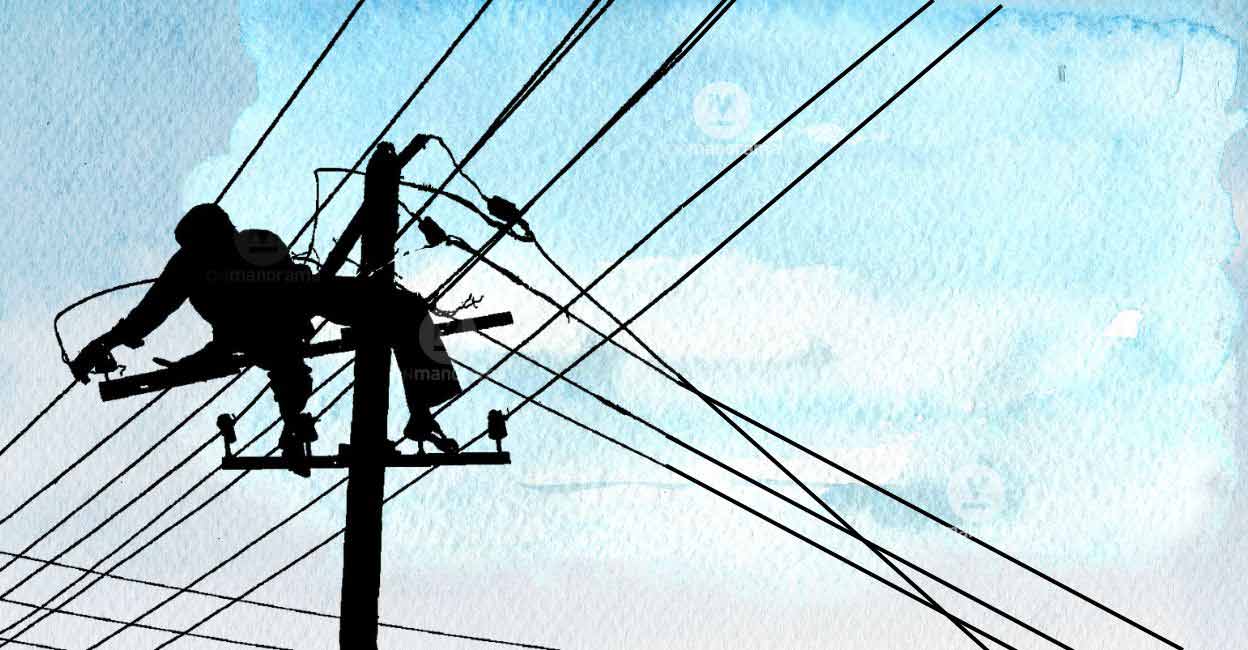With the southwest monsoon staying away like never before, and people consuming electricity like it is still the peak of summer, Kerala looks inches away from a severe power crisis.
The need to save for what looks like an imminent drought, if the monsoon does not revive by September, has forced Kerala State Electricity Board Limited (KSEBL) to keep hydel generation at the minimum possible. But the need to conserve water in dams has necessitated increased purchases of costly power from outside.
KSEB's revenue gap is all set to balloon. Electricity minister K Krishnankutty has already broached the possibility of imposing power cuts.
What has precipitated the power crisis?
The doom has been triggered by a weak Southwest monsoon.
Right in the middle of a supposed monsoon season, the average water level in KSEB's dams has plummeted to a seasonal low of 37 per cent. Same time last year, it was more than 80 per cent.
Usually in August, Kerala gets good rainfall. In the first half of August last year, the state got 32.6 centimetre rain. In 2020, during the first half of August, it was 50.8 cm. In 2019, same time, it was 68.6 cm.
In between was a dull August. The first half of August 2021 received a rainfall of only 19.2 cms, considered too low by August standards.
Here is what Kerala received in the first 15 days of this August: 2.5 cms. If the 2021 August rainfall was a trickle, this year it was just a drop.
When reservoirs are full, especially during and after the monsoons, KSEB can generate up to even 40 million units a day from its hydel stations. This August, daily hydel generation is limited to 14-15 million units. Caution is the byword.
Water has to be conserved in dams in case the Northeast monsoon, too, plays truant and drought sets in.
Is there excessive power use in Kerala?
Peak hour demand (6pm to 11pm) in Kerala has not crossed 5000 MW like it did in the middle of April this year. Yet, peak demand continues to mimic summer levels.
For instance on August 17, it was 4233MW, the same as that during most of March and April. On August 16, it was 4160MW. Clearly, the peak hour demand is increasing with every passing day. Usually, during August, peak demand remains in the 3500-3700MW range.
This August, Kerala's daily requirement has crossed 87 million units (MU), at least 15MU more than what is normal.
Is hydel power Kerala's biggest source?
Even in the best of times, when the dams are full and hydroelectric generation can be stepped up to the maximum, the power from hydel stations will be enough to meet only half or a bit more of our daily needs.
Even during a monsoon-blessed August, Kerala's daily requirement will be between 72-75MU. The maximum KSEB can generate from its hydel stations would be just about 40MU. Then, small parcels of power from KSEB's own solar and wind plants and other private power producers within the state would offer another 3-4MU. Nothing more than 45MU.
For the remaining 25-30MU, in the best of times, we have to depend on power purchases from outside.

What's the current state of power generation?
This August our requirement is nearly 87MU daily, at least 15MU more than what is normal.
From our hydel stations, we are in a position to generate nothing more than 15MU. If other internal generation is also considered, we can stretch the internal generation to 20MU. The remaining 60MU has to be purchased from outside.
On August 16, KSEB had purchased 64MU from outside. On August 17, it was 68MU. Outside purchases, clearly, are increasing.
Same time last August, KSEB had to purchase only 30 MU.
From where does KSEB borrow and at what cost?
Hydel power can meet half the state's needs in the best of times, which is during a rainy season when power consumption dips.
Otherwise, it will not be enough for even 25 per cent of our daily needs.
The remaining 75 per cent of Kerala's daily requirement has to be purchased from outside.
This is sourced basically from three areas: central generating stations (CGS) across the country, big power producers with whom KSEB has long-term contracts, and then the open market.
The power from CGS is relatively cheap and dependable. Even if fixed charges are included, power from CGSs do not cost more than Rs 4 a unit.
Kerala is allocated a certain percentage from these stations. For instance, we are alloted nearly 12% from the National Thermal Power Corporation plant at Rayalaseema in Andhra Pradesh, 21% from Talcher station in Odisha and 14% and 13.30% from Kudankulam stage I and II units respectively.
Then there are the long- and medium-term contracts that KSEB enters into from time to time. This is an insurance purchase, it assures a certain level of power supply for 20-25 years down the line at reasonable prices. The cost is Rs 4-5 a unit.
When power from CGS and long-term contracts is not enough, which is the case now, KSEB resorts to a kind of panic buying from power traders and exchanges. At the moment, during peak hours, a unit of power in the open market costs upwards of Rs 10.

Why did the ERC cancel KSEB's long-term deals
This May, Kerala State Electricity Regulatory Commission (KSERC) refused to approve four long-term power supply agreements KSEB had entered into in the 2016-17 period. The four deals - Jhabua Power Ltd (115MW), Jindal Power Ltd (150MW), Jindal India Thermal Power Ltd (100MW) and Jhabua Power Ltd (100 MW) - total 465 MW.
The KSERC said KSEB had deviated from the ministry of power guidelines. The utility, it was said, had erred in the selection of bidders and in choosing the quantum of power. Further, the KSERC said KSEB had failed to secure the mandatory approvals from it before striking the deals.
The KSERC said some of the deviations would have created an additional liability of Rs 237.07 crore a year, a total of Rs 5,926.75 crore for 25 years.
Given the power crisis, the KSERC in its May 10 order had allowed KSEB to source power from these four companies for 75 more days. The grace period ends on August 21.
If the KSERC disallows further extension, KSEB has to purchase this power from outside at exorbitant rates.
Is load-shedding the only option?
Before power cuts are resorted to, there should be an attempt to sensitise the public on the need to conserve power. It can work.
On April 19, for instance, Kerala's peak demand crossed 5000MW for the first time ever at 5024 MW.
KSEB frantically made a public appeal to avoid the use of pump sets, induction cookers, water heaters, iron boxes and washing machines during peak hours.
The very next day, without the benefit of rain, peak hour demand dropped to 4748MW.
This did not mean that people stopped using the power-guzzling gadgets. They just shifted the timing of their use to off-peak hours, mostly in the mornings and late at night.
As a result on April 20, the peak demand came down quite sharply though daily consumption had declined only marginally.


















